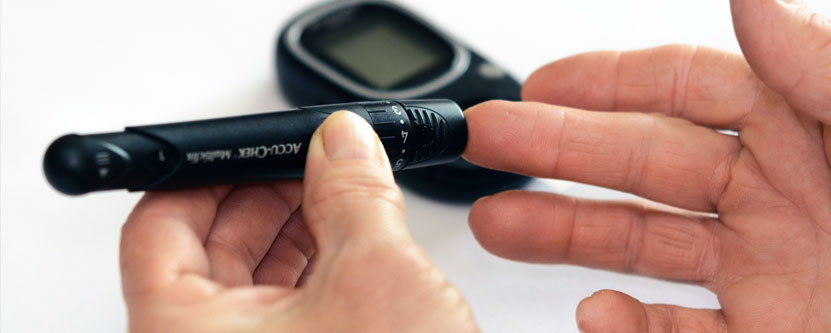Diabetes is a medical condition that occurs when the body is unable to produce the required levels of insulin or use the insulin produced efficiently. The role of insulin is to break down the sugar molecules and deliver them to the different parts of the body. When there is not enough insulin in the body to perform this function, it can lead to high sugar levels. Diabetes can impact virtually every organ in your body, including your eyes.
[the_ad id=”6084″]
It can cause conditions like glaucoma and cataracts and, in some cases, could even lead to a loss in vision. Here are the top five ways diabetes can affect your vision.
Blurry vision
A common effect of diabetes is blurred vision. This is when you lose clarity in your eyesight and cannot see the finer details of objects in your field of vision. Blurred vision can either occur in one eye, also known as unilateral vision, or in both eyes- bilateral vision. Hence, if you have diabetes, an eyesight problem does not always warrant the need for eyeglasses because, in some instances, it could just be the result of high sugar levels. You will be required to bring your sugar levels back to the normal range of 70-130 mg/dL. It is important that you consult your doctor if you have blurred vision because if left untreated, it could lead to more serious problems.
Cataracts
Our eyes have clear lenses that help us see clearly and focus on specific things. But as we age, the lens tends to wear out and becomes clouded, which results in poor vision. The medical term for these cloudy lenses is cataracts and is usually common in the elderly. However, people with diabetes are more likely to get cataracts earlier than those who don’t.
Research shows the cataract occurs because of the excess glucose in the body that builds up around the lenses in your eyes, thereby, impacting your vision. The most common symptoms of cataracts include a slight glare and blurred vision. The doctor will recommend eye surgery to remove the cataract, where the clouded lenses will be replaced with artificial ones.
Glaucoma
While blurry vision and cataracts are individual eye problems, glaucoma refers to a group of eye diseases that affect the optic nerve in the eye. The optic nerve is a collection of nerves that connects the eye to the brain. When there is glucose build up in the eye, it creates pressure and the fluid in the eye is not able to drain as it should. If not treated, glaucoma can even lead to blindness. The most common type of glaucoma is open-angle which can be treated with medication to relieve the pressure in the eye. Other rare types of glaucoma include neovascular glaucoma which causes blood vessels to grow in the outer iris of the eye. The doctor may use a laser treatment to lower the number of blood vessels in conjunction with medication to lower the pressure.
Diabetic retinopathy
Another common eye problem that is associated with high sugar levels is diabetic retinopathy and is more prevalent among people over 40. This problem is associated with the retina, which are cells in the back of the eye that capture the light and convert it into images that are sent to the brain. High sugar levels can affect the blood vessels in the retina which leads to diabetic retinopathy. People who have Type 1 diabetes in adulthood are more likely to have this problem.
The best way to treat diabetic retinopathy is through early detection. Studies show that treating this issue before it gets too serious can lower the chances of blindness by 95 per cent. Controlling your sugar intake, blood pressure and cholesterol are effective ways to treat diabetic retinopathy. You should also refrain from smoking.
Diabetic macular edema
The macula is an important organ in the retina that is essential for driving, reading and clear vision. When a person has diabetes, it can cause the macula to swell up, this is known as Diabetic Macular Edema (DME). When there is swelling, it can lead to a buildup of fluid in the macula which can affect our eyesight. If DME is left untreated, the eye pressure increases, causing the fluid to leak.
- There are two forms of DME; focal DME is the result of excess blood vessels in the eye and diffuse DME occurs when there is a swelling in the retina. It is more common in people who have diabetic retinopathy.
- The five medical conditions listed above can affect your vision if you fail to keep your sugar levels under control. In order to prevent your vision from getting worse, make sure your blood pressure and cholesterol are under control and avoid smoking. This should be done while maintaining a healthy lifestyle.
It is also recommended that you get a master-health checkup to ensure that your sugar levels are under control. The earlier you catch any problems, the easier it is to keep the problem under control.
Source:

